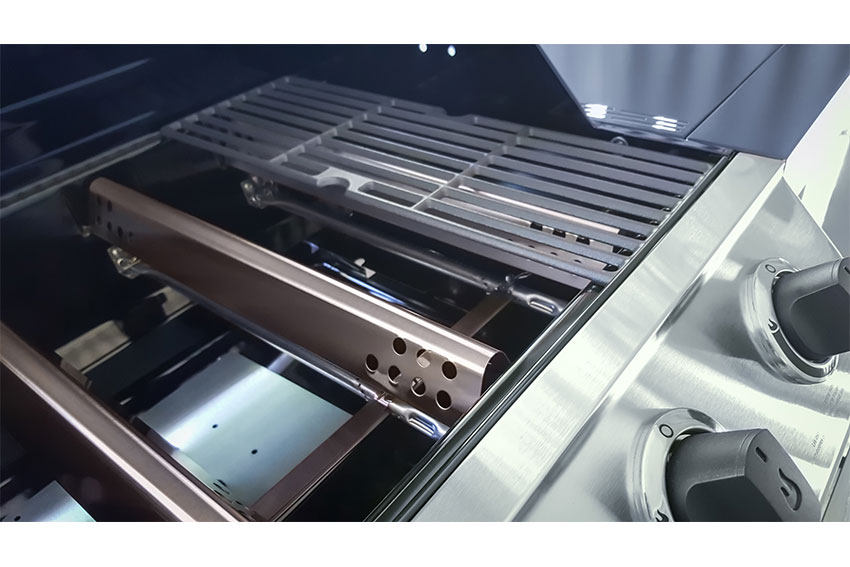
How to Clean Commercial Cooking Equipment
When you manage a commercial kitchen, the health and safety of your clients and your employees depend on your facilities’ cleanliness. This is why thorough cleaning and disinfection are so important.
The best practices for restaurant cleaning include rules for maintaining the cleanliness of your establishment and your commercial cooking equipment. Keeping your kitchen equipment and supplies clean and sanitary is an essential part of being a restaurant owner.
But, when it comes to commercial-grade equipment, you’ll find that the cleaning best practices can differ from what most people are familiar with. Keep on reading to learn everything you need to know about cleaning commercial cooking equipment.
Commercial Cooking Equipment 101: Tackling Stainless Steel Equipment
Stainless steel is the most often used metal in commercial kitchens. Even though stainless steel equipment is resistant to germs, it still has to be cleaned regularly. Thus this is the first commercial kitchen cleaning tip.
If you don’t have stainless steel equipment in your commercial kitchen, you can always get bacteria-resistant stainless steel commercial kitchen equipment.
Generally speaking, it’s a breeze to clean. Detergent powder, water, and clothes or sponges are all you need. Clean the stainless steel equipment by soaking the cloth in soapy water. To remove all the soap, wash the towel and clean the equipment afterwards. To avoid cross-contamination, use a dry towel to finish cleaning it.
Cleaning of Electrical Equipment
It may be unpleasant and time-consuming to clean commercial kitchen equipment. This is even more relevant for equipment that is powered by electricity. Yet, frequent cleaning may make it easier.
We recommend that you carefully study and follow the cleaning directions in the manuals since the equipment is electric.
Unplug your equipment prior to cleaning to prevent any accidents. Also, removing all of the equipment’s removable pieces makes cleaning a much simpler process. Cleaning a fryer, for example, requires draining the oil and removing the various elements, such as the baskets and trays.
Avoid using a damp cloth to touch the wires on any piece of equipment that has water damage. Avoid getting water on electrical components by keeping them away from them.
How to Remove Greasy Stains
Greasy spots are one of the most challenging things to remove. You’ll see stains like this on various cooking equipment. These include gas ranges, barbecues, ovens, stainless steel prep tables, and deep fryers.
Here’s how to thoroughly clean a cooktop, hob, or oven, as the case may be.
Stains on commercial kitchen equipment may be removed by scrubbing. But, you’ll want to ensure you’re using the right cleaning solutions or soaps.
In addition, you may clean oily trays and jars by putting them in soapy water overnight. Poor-quality or inefficient exhaust systems cause the majority of grease stains on equipment.
Preventative Maintenance of the Cooktop and Gas Burner
The dirtiest part of a gas burner is the one that is exposed to the most spillage. To prevent gas waste and carbon buildup on cooking utensils, it’s crucial to maintain a gas burner clean.
The following steps are the basics of cleaning a gas burner. Start by removing the cooking range’s gas burner head by gently pulling the screws. Puncture the burner’s head with a needle to clear the obstructions.
Then, submerge the burner head in a large bowl of kerosene, fuel, or diesel. Let it sit for a few hours in the liquid. At this point, You should dry the burner head before being reattached to the stove. 10-15 seconds of full-on flame time is all that is needed. You’ll notice that the flame will become blue again after being cleaned.
Instructions for Cleaning Your Commercial Oven
This work may not be on anyone’s list of favourite things to do. But, the reality is that frequent cleaning of a commercial oven makes the process better. The owner’s handbook for your oven should provide instructions on cleaning it properly.
It’s possible to dislodge food residue without damaging the oven’s surface. You can use a blunt tool like a spoon or an extractor fan or by opening a window.
You may also cover the floor area beneath and around the oven door. Then, remove the oven shelves for soaking and cleaning separately.
It’s also critical to use manufacturer-approved cleaning materials. Professional kitchen cleaning tools can handle baked-on stains, and gloves will keep your skin safe from potentially hazardous chemicals. Because they don’t shed any combustible fibres, microfiber cloths are excellent for cleaning ovens.
Is your oven overflowing, yet you’re short on time? You may reduce the scrubbing by leaving the oven cleaner on overnight.
Preventative Maintenance for Grease Traps and Kitchen Exhaust Systems
Under-sink grease traps and inceptors must be cleaned at least once a week to keep everything functioning smoothly and efficiently. You may avoid a sewage line blockage with regular cleaning. If grease machines are more than half-filled after a week of cleaning, you should increase the frequency of cleaning for sanitation and safety.
Sewage backs up into a business enterprise and poses a significant health risk if you see it. Using grease trap cleaning equipment regularly not only avoids grease clogs but also reduces costs in several other ways, including keeping maintenance costs low and conserving water.
Regularly, the kitchen’s exhaust system filters must be cleaned. In addition to preventing grease and oil from escaping and entering storm drains, this is a critical step in preventing kitchen fires in the first place.
Commercial Cooking Equipment Guide: The Cleaning Edition
Regular cleaning of business equipment makes it a simple chore. You should also undertake yearly maintenance on all of your equipment and clean it. We hope that our guide has shed some light on the nuances of adequately taking care of your commercial cooking equipment.
And, if you’re in the market for superior commercial cooking equipment, you should check out this extensive selection.
